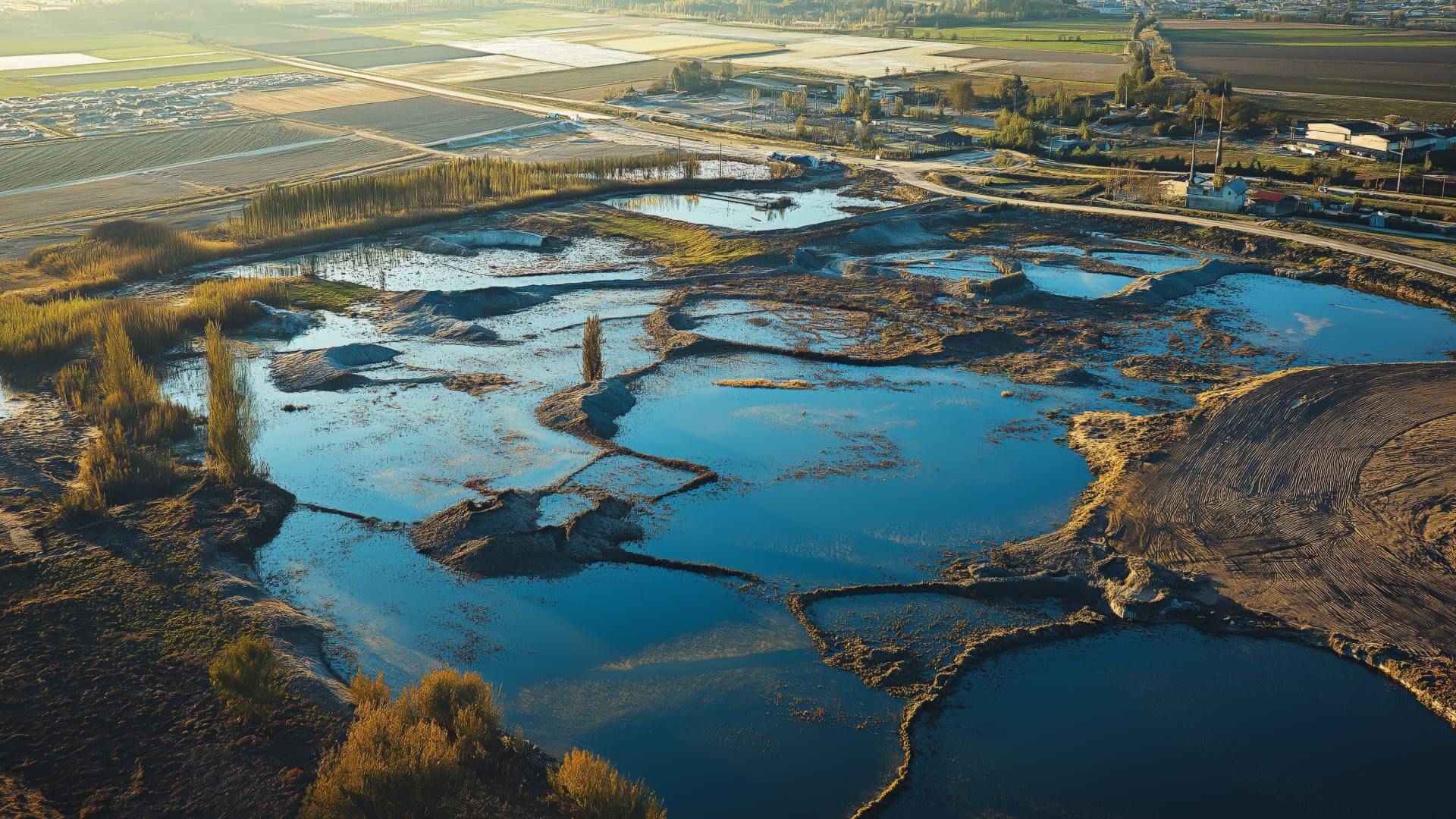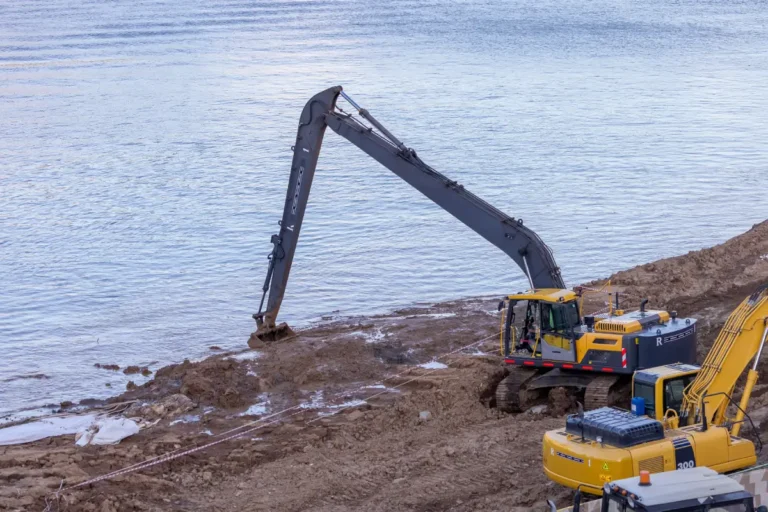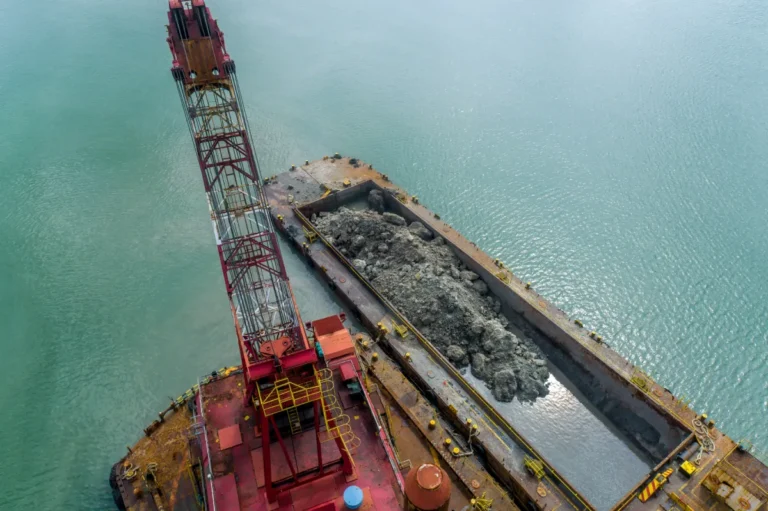The world faces an unprecedented environmental crisis. Pollution from industrial waste, urban sprawl, and agricultural runoff has contaminated our air, water, and soil. Climate change continues to amplify these problems, leading to rising temperatures, extreme weather events, and disrupted ecosystems. Meanwhile, deforestation and habitat destruction threaten biodiversity, pushing countless species to the brink of extinction. In the face of these daunting challenges, one thing is clear: urgent action is required to repair the damage and build a sustainable future. This is where environmental remediation plays a pivotal role. Environmental remediation refers to the critical process of identifying, addressing, and reversing environmental damage caused by human activities. Whether it’s cleaning up hazardous materials from contaminated soil, restoring polluted waterways, or reducing harmful emissions, these efforts aim to protect ecosystems, ensure public health, and promote long-term sustainability.
The importance of environmental remediation lies in its ability to directly address pollution at its source. By employing innovative methods, such as bioremediation, nanotechnology, and thermal desorption, these solutions not only remove contaminants but also help restore ecosystems to their natural state. As a result, environmental remediation services are indispensable in tackling the root causes of environmental degradation, fostering resilience in both natural and urban landscapes. Environmental remediation companies are at the forefront of this mission. They specialize in providing tailored solutions for specific challenges, whether it’s managing industrial waste, mitigating oil spills, or rehabilitating abandoned mining sites. These companies bring together cutting-edge technologies, industry expertise, and sustainable practices to meet the growing demand for effective and eco-friendly remediation efforts.
This blog explores the transformative power of advanced technologies and sustainable practices in environmental remediation. By examining innovative tools, techniques, and strategies, we’ll uncover how environmental remediation services are evolving to address some of the world’s most pressing challenges. From AI-driven site assessments to nature-based solutions, these advancements are shaping a cleaner, healthier future for our planet.
The Importance of Environmental Remediation
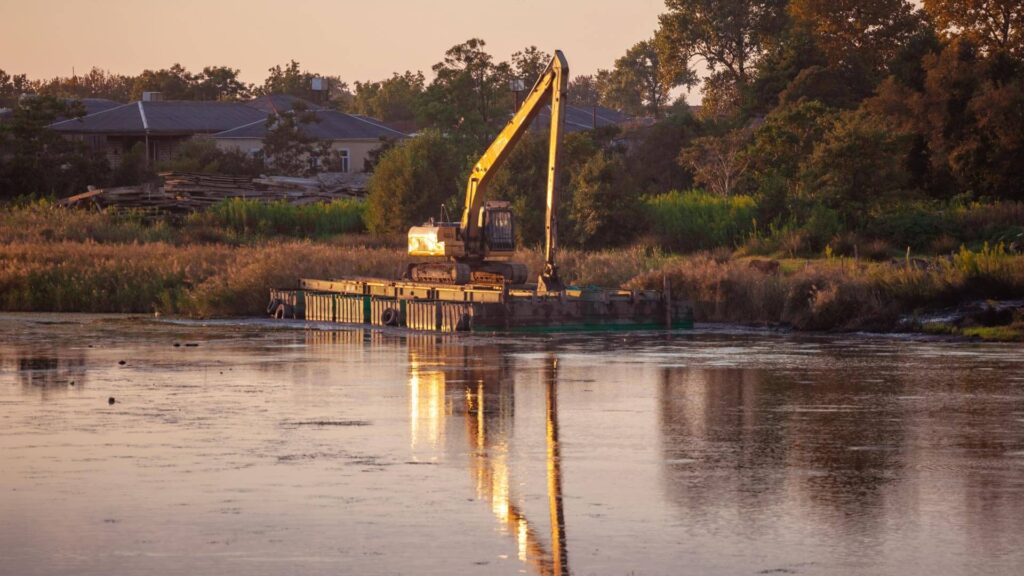
What is Environmental Remediation?
Environmental remediation refers to the process of cleaning up and restoring contaminated environments caused by human activities. It involves identifying, managing, and removing pollutants from soil, water, and air to protect ecosystems, human health, and biodiversity. This critical practice is essential in combating the long-term consequences of industrialization, urbanization, and resource exploitation.
The significance of environmental remediation lies in its ability to reverse environmental damage and minimize risks to public health. Contaminants such as heavy metals, hydrocarbons, pesticides, and industrial chemicals can wreak havoc on ecosystems and communities if left unaddressed. Through specialized techniques like bioremediation, thermal desorption, and advanced filtration systems, environmental remediation services help restore ecological balance and support sustainable development.
The Growing Demand for Environmental Remediation Services
The demand for environmental remediation services is rapidly increasing as industrialization and urbanization continue to accelerate. While these developments drive economic growth, they also contribute to significant environmental degradation. Industries such as manufacturing, mining, and energy production often produce hazardous byproducts that contaminate the environment.
Urbanization further exacerbates the problem through improper waste management, sewage discharge, and construction activities that disrupt natural ecosystems. As a result, governments and industries worldwide are turning to environmental remediation companies to tackle these issues and meet stricter environmental regulations.
Role of Environmental Remediation Companies
Environmental remediation companies are at the heart of efforts to combat environmental degradation. These organizations bring technical expertise, innovative solutions, and sustainable practices to the complex challenges of remediation. Their role includes:
- Assessment and Planning:
- Conducting detailed site assessments to identify the type and extent of contamination.
- Developing customized remediation strategies tailored to specific environmental challenges.
- Implementation of Remediation Techniques:
- Deploying advanced technologies such as bioremediation, thermal desorption, and chemical oxidation to remove contaminants.
- Restoring ecosystems by rehabilitating soil, water, and air quality.
- Monitoring and Compliance:
- Ensuring remediation efforts meet regulatory standards and environmental guidelines.
- Providing long-term monitoring to prevent future contamination.
Technological Innovations Driving Environmental Remediation
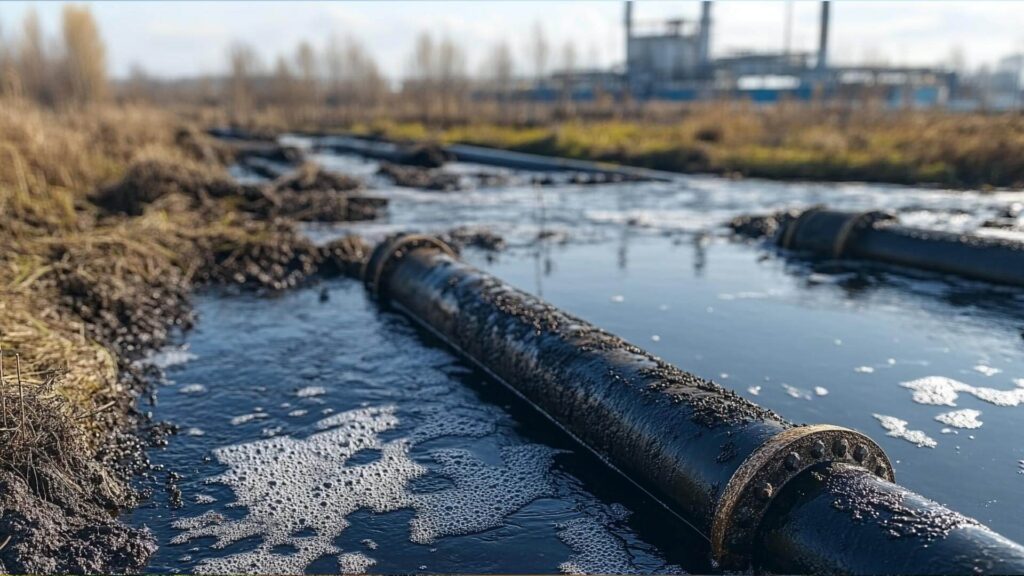
Innovative technologies are revolutionizing environmental remediation, offering advanced, efficient, and eco-friendly solutions to address pollution and restore ecosystems. From natural processes to cutting-edge artificial intelligence, these technologies empower environmental remediation services and companies to tackle complex challenges with precision and sustainability. Below are some of the most impactful technologies driving progress in the industry.
Bioremediation: Harnessing Nature for Environmental Cleanup
Bioremediation is a groundbreaking approach that uses natural processes to break down and neutralize environmental pollutants. This technique restores ecosystems without introducing harmful chemicals or synthetic materials. It uses microbes and plants.
Microbial and Plant-Based Remediation Methods:
- Microbial Bioremediation involves introducing specialized microorganisms into contaminated environments to metabolize and degrade pollutants such as hydrocarbons, heavy metals, and pesticides.
- Phytoremediation: Certain plants absorb, stabilize, or degrade contaminants in soil and water. Sunflowers are effective at extracting heavy metals, while water hyacinths can filter pollutants from water sources.
Applications in Environmental Remediation Services:
- Oil Spill Clean-Ups: Microbial bioremediation is commonly used to degrade oil pollutants in marine and coastal environments, minimizing long-term ecological damage.
- Groundwater Purification: Microbes and plants effectively remove toxins from groundwater, making it safe for consumption and irrigation.
Bioremediation is an eco-friendly and cost-effective method that environmental remediation companies prefer to address various contamination challenges.
Nanotechnology in Environmental Remediation
Nanotechnology offers unparalleled precision in targeting and removing environmental contaminants. By utilizing engineered nanomaterials, environmental remediation services can achieve results that were previously unattainable with conventional methods.
Nanomaterials for Precision Targeting:
- Nanoparticles are designed to bind with specific contaminants, such as heavy metals, hydrocarbons, or pesticides, facilitating their removal from soil, water, or air.
- Nanoscale materials, like titanium dioxide and carbon nanotubes, enhance the efficiency of filtration and detoxification processes.
Benefits for Environmental Remediation Companies:
- Enhanced Efficiency: Nanotechnology accelerates the breakdown and removal of pollutants, reducing project timelines.
- Scalability: It is adaptable to both small-scale and large-scale remediation efforts.
- Safety: Nanomaterials minimize the need for harmful chemicals, reducing ecological and human health risks.
Applications include groundwater purification, air quality improvement, and advanced soil treatment, making nanotechnology an invaluable tool in modern environmental remediation.
Thermal Desorption: Heat-Based Contaminant Removal
Thermal desorption is a versatile technology that uses heat to separate and remove contaminants from soil and sediments. This process is particularly effective for addressing pollution caused by industrial activities.
How Thermal Desorption Works:
- Contaminated material is heated in a controlled environment, causing pollutants to vaporize. These vapors are then captured and treated, leaving the soil or sediment clean and reusable.
Industries Benefiting from Thermal Desorption:
- Mining: Removes heavy metals and other toxins from mining waste.
- Manufacturing: Cleans up industrial discharge and contaminated sites near factories.
Thermal desorption’s ability to restore contaminated land for reuse aligns with the goals of environmental remediation services focused on sustainability and economic revitalization.
Electrochemical Processes: Innovating Wastewater Treatment
Electrochemical processes are transforming wastewater treatment by offering efficient, chemical-free solutions for pollution control. These methods use electrical currents to neutralize contaminants in industrial and municipal wastewater.
Advances in Electrochemical Remediation:
- Electrochemical oxidation breaks down organic and inorganic pollutants, including heavy metals, ammonia, and pathogens.
- Capacitive deionization technology removes salts and heavy metals, improving water quality.
How It Supports Environmental Remediation Companies:
- Reduces Chemical Usage: By eliminating the need for chemical additives, electrochemical processes minimize secondary pollution.
- Cost-Effective: Low operational costs make it an attractive option for long-term wastewater management.
Electrochemical processes are increasingly adopted by environmental remediation services to address the challenges of industrial discharge and ensure cleaner water supplies.
Artificial Intelligence (AI) and Big Data: Transforming Remediation
Artificial Intelligence (AI) and Big Data are revolutionizing environmental remediation by enhancing decision-making, efficiency, and precision. These technologies allow environmental remediation companies to analyze vast datasets and optimize remediation efforts.
Leveraging AI in Environmental Remediation Services:
- Site Assessment and Contamination Mapping: AI-powered tools process satellite imagery, historical data, and real-time monitoring to identify contamination hotspots with high accuracy.
- Predictive Modeling: Machine learning algorithms simulate remediation scenarios, helping companies determine the most effective methods and technologies for specific sites.
- Real-Time Monitoring: Sensors and IoT devices provide continuous data on contamination levels, enabling proactive responses to emerging environmental risks.
The integration of AI improves remediation outcomes and reduces costs and environmental impact, making it indispensable for forward-thinking environmental remediation companies.
Sustainable and Eco-Friendly Remediation Approaches
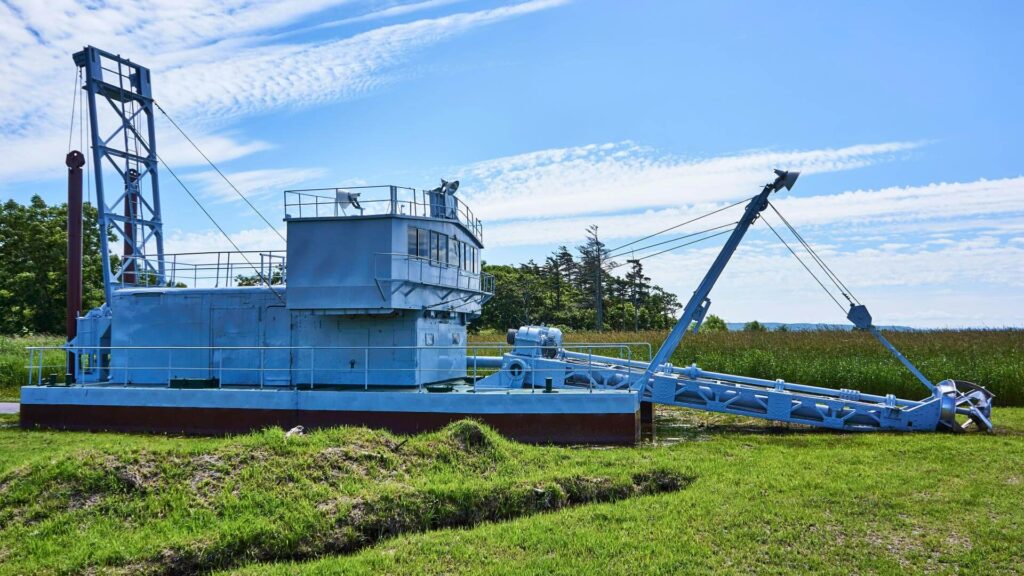
Sustainability is at the heart of modern environmental remediation, as industries, governments, and organizations increasingly prioritize eco-friendly solutions to address pollution. By adopting nature-based methods, integrating renewable energy, and advancing waste management systems, environmental remediation companies are setting new standards for restoring ecosystems while minimizing environmental impact. Below are some of the most sustainable approaches to transforming the field of environmental remediation services today.
Nature-Based Solutions
Nature-based solutions harness the power of natural processes to remediate polluted environments. These approaches remove contaminants and enhance biodiversity and ecosystem health.
Phytoremediation: Using Plants to Extract Toxins
Phytoremediation involves using plants to absorb, degrade, or stabilize pollutants in soil, water, and air. Certain plant species, known as hyperaccumulators, are particularly effective in extracting heavy metals, hydrocarbons, and other contaminants.
- Example Applications:
- Sunflowers and poplar trees are used to clean up lead-contaminated soils.
- Water hyacinths help remove toxins from polluted waterways.
- Benefits:
- Low-cost and non-invasive.
- Enhances soil fertility and biodiversity in the long term.
Wetland Restoration
Restoring natural or constructed wetlands effectively filters pollutants, traps sediments, and improves water quality. Wetlands act as natural “biofilters,” removing nutrients, heavy metals, and pathogens from surface water and groundwater.
- Impact on Biodiversity: Wetland restoration not only helps remove pollutants but also provides critical habitats for wildlife, fostering biodiversity.
- Applications: Ideal for managing agricultural runoff and industrial wastewater near coastal or riverine environments.
By incorporating nature-based solutions, environmental remediation companies can achieve sustainable outcomes that go beyond pollution removal to include ecosystem restoration and climate resilience.
Circular Economy in Remediation
The circular economy framework aims to minimize waste and maximize resources. In environmental remediation services, this concept is applied to recycle and repurpose materials, turning hazardous byproducts into valuable resources.
Recycling and Repurposing Waste Materials
- Contaminated soils treated through processes like soil washing or thermal desorption can often be reused in construction or landscaping projects.
- Wastewater from industrial processes can be purified and recycled, reducing water usage and conserving resources.
Converting Hazardous Byproducts into Usable Resources
- Heavy metals recovered during remediation efforts can be repurposed for use in manufacturing.
- Biogas produced during organic waste treatment can be used as a renewable energy source.
Green Energy Integration
Green energy integration is another sustainable approach gaining traction in environmental remediation services. By using renewable energy sources to power remediation systems, companies can significantly reduce their operations’ carbon footprint.
Employing Solar and Wind Energy
- Solar-powered remediation systems are increasingly being used for groundwater treatment, reducing reliance on fossil fuels.
- Wind turbines can supply energy to remote remediation sites where traditional power sources are inaccessible.
Reducing the Carbon Footprint of Remediation Projects
- Portable solar arrays are now being used to power monitoring systems and pumps in remote or off-grid locations.
- Green energy integration reduces emissions and lowers operational costs for environmental remediation companies, making it a sustainable and economically viable solution.
Innovative Waste Treatment Systems
Advancements in waste treatment systems are enabling environmental remediation services to process waste on-site, reducing the need for transportation and minimizing secondary pollution.
Technologies to Process Waste On-Site
- Mobile Treatment Units are portable systems that treat contaminated soil or water directly at the source of pollution. These units reduce the need to transport hazardous materials, reducing costs and emissions.
- Advanced Filtration and Separation Systems: On-site technologies that separate pollutants from reusable resources, such as clean water or construction-grade soil.
Benefits of On-Site Waste Treatment Systems
- Reduces the risk of cross-contamination during transportation.
- Lowers the overall environmental impact of remediation projects by minimizing fuel usage and emissions.
- Ensures faster project completion, as waste is treated and managed without delays caused by off-site processing.
Key Technologies for Specific Environmental Challenges
The diverse challenges of pollution require tailored approaches to achieve effective environmental remediation. From contaminated soil to polluted marine ecosystems, advanced technologies are enabling environmental remediation services and environmental remediation companies to address specific environmental hazards with greater efficiency and sustainability. Here’s a look at the key technologies driving progress in tackling these challenges.
Soil Remediation
Contaminated soil poses a significant threat to ecosystems, agriculture, and public health. Advanced soil remediation techniques that target specific pollutants are helping to restore soil quality and productivity.
Remediation Techniques for Contaminated Soil:
- Soil Washing:
- A process that uses water or chemical solutions to extract contaminants such as heavy metals, hydrocarbons, and pesticides from soil.
- Effective in cleaning up industrial sites and agricultural lands.
- Soil Stabilization:
- Techniques that bind contaminants within the soil, preventing them from leaching into groundwater or spreading to surrounding areas.
- Commonly used in areas contaminated with lead, arsenic, and other toxic substances.
Addressing Pesticide Contamination, Heavy Metals, and Hydrocarbons:
- Pesticides: Biological remediation methods, such as biopiles, break down pesticide residues in soil.
- Heavy Metals: Phytoremediation and chemical extraction techniques help recover and stabilize metals like mercury and cadmium.
- Hydrocarbons: Bioremediation uses microorganisms to degrade petroleum-based contaminants in industrial and spill-affected areas.
Groundwater and Surface Water Remediation
Water contamination is a critical issue, as polluted water sources threaten ecosystems, human health, and agriculture. Modern technologies are making water decontamination more efficient and effective.
Advanced Filtration Systems and Membrane Technologies:
- Reverse Osmosis (RO): A filtration process that removes contaminants, including dissolved salts, heavy metals, and organic compounds, from groundwater and surface water.
- Nanofiltration Membranes: Advanced membranes capable of removing even the smallest particles, such as microplastics and pharmaceuticals.
- Activated Carbon Filters: Adsorb harmful chemicals and pollutants, improving water quality.
Removing Emerging Contaminants Like Microplastics and Pharmaceuticals:
- Microplastics: Innovative filtration and separation systems can trap and remove microplastics, preventing them from entering ecosystems and drinking water supplies.
- Pharmaceuticals: Advanced oxidation processes (AOPs) and bioremediation techniques degrade pharmaceutical residues in wastewater and groundwater.
Air Pollution Control
Air pollution affects human health and exacerbates climate change. Advanced technologies enable environmental remediation companies to capture and neutralize airborne pollutants effectively.
Technologies to Capture and Neutralize Airborne Pollutants:
- Electrostatic Precipitators:
- Capture fine particulate matter, such as dust and smoke, emitted by industrial facilities.
- Scrubbers:
- Wet scrubbers and dry scrubbers remove harmful gases, such as sulfur dioxide (SO₂) and nitrogen oxides (NOₓ), from industrial exhaust streams.
- Carbon Capture Technology:
- Captures CO₂ emissions directly from the air or industrial sources, reducing greenhouse gas levels.
Role of Air Remediation in Mitigating Climate Change:
Air remediation technologies not only improve air quality but also play a vital role in reducing the carbon footprint of industrial activities. By neutralizing pollutants and capturing CO₂, these solutions align with global efforts to combat climate change.
Marine Ecosystem Remediation
Marine ecosystems face unique challenges, including oil spills, plastic pollution, and chemical contamination. Specialized technologies are helping to protect and restore these vital ecosystems.
Tackling Oil Spills, Plastic Pollution, and Other Marine Hazards:
- Oil Spill Remediation:
- Bioremediation techniques, such as oil-eating bacteria, are used to break down hydrocarbons from spills.
- Skimming and sorbent materials are employed to remove oil from water surfaces.
- Plastic Pollution:
- Floating barriers and ocean cleanup devices are used to trap and collect plastic debris from marine environments.
Innovative Floating Barriers and Underwater Remediation Techniques:
- Floating Barriers: Deployed in rivers and oceans to intercept plastic waste before it reaches open waters.
- Underwater Robots and Drones: Used to map, monitor, and clean up contaminants from seabeds and underwater environments.
- Chemical Neutralization Technologies: Remove or neutralize hazardous substances, such as heavy metals and pesticides, in marine sediments.
Benefits and Challenges of Innovative Remediation Technologies
Innovative technologies are transforming environmental remediation, providing advanced solutions to combat pollution and restore ecosystems. However, alongside their numerous benefits, these technologies also present certain challenges. Here’s a concise look at the advantages and obstacles of implementing cutting-edge approaches in environmental remediation services.
Benefits of Innovative Remediation Technologies
- Increased Efficiency: Modern technologies, such as bioremediation and nanotechnology, accelerate pollutant removal processes, reducing project timelines and costs.
- Enhanced Precision: Tools like AI and advanced filtration systems allow environmental remediation companies to target contaminants with pinpoint accuracy, minimizing disruption to surrounding environments.
- Eco-Friendly Solutions: Sustainable methods, such as green energy integration and nature-based solutions, reduce the ecological footprint of remediation projects.
- Long-Term Sustainability: Advanced techniques ensure lasting results by addressing pollution at its source and preventing future contamination.
- Regulatory Compliance: Cutting-edge technologies help organizations meet stringent environmental regulations efficiently and effectively.
Challenges of Innovative Remediation Technologies
- High Initial Costs: The development and deployment of advanced remediation technologies require significant investment, which may be a barrier for smaller projects.
- Skill and Expertise Requirements: Operating innovative technologies often requires specialized knowledge and training, which limits their accessibility for some environmental remediation services providers.
- Scalability Issues: Certain technologies may face challenges in scaling up for large-scale remediation projects.
- Regulatory Hurdles: Delays in approval processes for emerging technologies can slow down their implementation.
- Technology Adaptation: Not all remediation technologies are universally applicable, as site-specific conditions can impact their effectiveness.
Conclusion
Environmental remediation is essential for addressing pollution, restoring ecosystems, and protecting public health. By leveraging advanced technologies such as bioremediation, nanotechnology, and AI-driven monitoring systems, environmental remediation services are becoming more effective and sustainable. These innovative approaches enable environmental remediation companies to tackle soil, water, air, and marine contamination with greater precision and eco-friendliness, fostering long-term environmental recovery and resilience.
While challenges such as high costs, scalability, and regulatory hurdles remain, the growing commitment to sustainability and collaboration among governments, industries, and researchers is driving progress. As these technologies continue to evolve, environmental remediation will play a pivotal role in shaping a cleaner, healthier future, ensuring ecosystems are preserved, and environmental risks are mitigated for generations to come.


